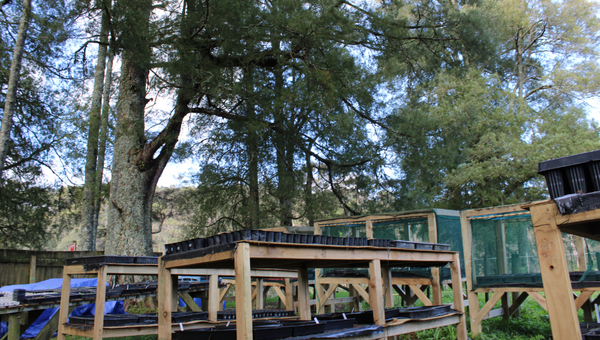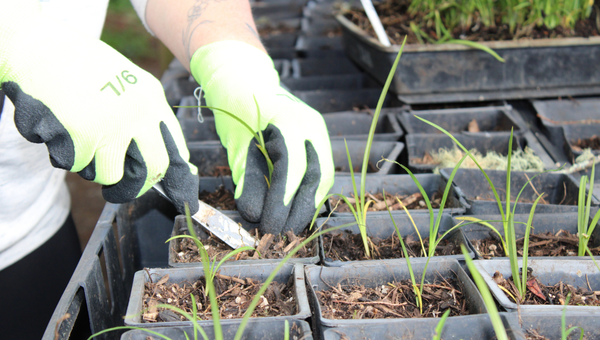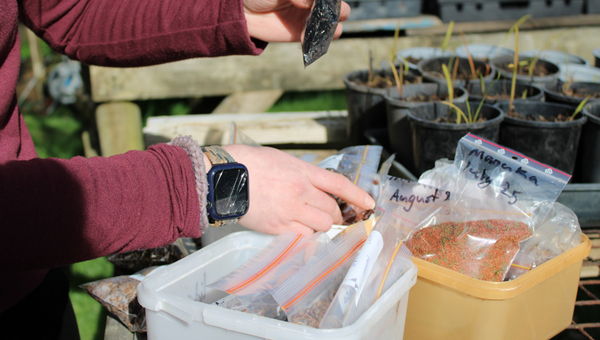Last issue, we shared the launch of The Y’s partnership with Counties Energy to restore Te Wairoa River and give schools and young people the chance to be part of the process at Y Camp Adair. These projects tackle climate change, support conservation and bring education to life through hands-on experiences.
Nature’s Classroom
So far, more than 120 students across five schools have planted more than 1,500 natives through the Nature’s Classroom initiative, with four more classes set to join this year.
The initiative has been very successful, and the impact has been powerful. Students have called the experience “being a good kaitiaki (guardian)” and “the best school trip I’ve ever been to!”, showing that a hands-on connection to nature is shaping how young people see their role in protecting our planet.
Since opening in February, the on-site nursery of native plants has produced more than 8,000 seedlings, giving tamariki (children) the chance to be involved in every step from propagation to planting. With demand rising, funding has been secured for a second nursery, doubling capacity and ensuring more young people can participate in conservation while supplying the plants needed to keep Te Wairoa River restoration thriving into the future.

Community Planting Day
On the 30th of August, the community came together for a planting day held 1km upstream from camp, organised by Te Wairoa River Restoration Project and supported by The Y Camp Adair. The site was chosen for its unique conditions as a floodplain that dries in summer and floods in winter. This location helps soak up water, reduce erosion, and create wildlife corridors, working to bridge ecosystems into urban areas.
With 33 volunteers and 8 instructors, the group planted 1,000 trees in just 1.5 hours - an incredible achievement that shows what can be done when people come together. Some volunteers even travelled more than an hour to take part, reflecting the passion and dedication behind this project.
Beyond the trees themselves, the day was about connection: families, neighbours, and staff working side by side, forming new friendships and building a stronger sense of community. It also showed how deeply people care about supporting sustainability in their own backyard. The energy and success of this planting day have created real momentum, paving the way for even more opportunities for the community to come together and make a lasting impact on the environment.

Sustainability at Y Camp Adair
The commitment to regeneration doesn’t stop at the river. Camp Adair staff are also embedding sustainability into the everyday running of the camp. Over the past year, they’ve stopped using chemical herbicides, restored underused areas with native planting and introduced composting to cut down food waste that once went to landfill, now turning it into nutrients for future projects. Active pest management is also underway, helping native wildlife return and thrive.
These practical changes show how The Y is working at every level, from large-scale river restoration to the daily choices at camp to build a more sustainable future. And everyone has a role to play. If you spot a way your Y could be more sustainable, share your ideas with your centre team so we can keep making progress together.

